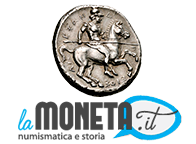Tutte le attività
Questo elenco si aggiorna automaticamente
- Ultima ora
-
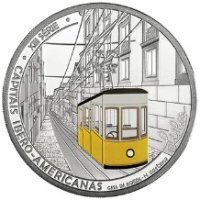
Cofanetti Cartone con monete incastrate..........
Carlo. ha risposto a un topic di AndreaMCMLXXVIII inviato in Euro Monete da collezione Italiane e delle altre Zecche Europee.
Avevo riscontrato lo stesso problema sulla ciambella della Vespucci. Ho rinunciato a rimuovere la moneta dalla scatola 😭 -
Raccolta di rebus attinenti alla Numismatica
esperanto ha risposto a un topic di apollonia inviato in Agorà
AND Ares: P esso adorano = andare spesso ad Orano. Buona giornata! -
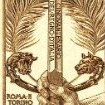
Filatelia Monumenti di carta. (Carrellata di francobolli dal mondo)
PostOffice ha risposto a un topic di PostOffice inviato in Filatelia e Storia Postale
- Oggi
-
 Soun ha cambiato la sua foto del profilo
Soun ha cambiato la sua foto del profilo - Ieri
-

Metaponto , contromarca ...
Deinomenid ha risposto a un topic di joannes carolus inviato in Monete greche: Sicilia e Magna Grecia
Ho il saggio ma non riesco a caricare le immagini. Questa è una trascrizione delle prime 3 pagine – penso che copra tutto, ma se hai bisogno di altro, fammelo sapere. THE BRONZE COINAGE OF METAPONTUM Ann Johnston (Plates XXXV – XXXVIII) The bronze coinage of Metapontum is far more diverse and abundant than that of most of her South Italian neighbours. It would appear to have been struck intermittently over roughly a century and a half, although dating is (as we shall see) uncertain since there is very little direct connection between the bronze and the silver coinage, and very few unambiguous clues as to sequence and chronology. The outline of the coinage that is presented here is therefore extremely tentative, and is intended to provide some idea of the range of types, grouped in a preliminary classification. The best hope of establishing a more reliable chronology lies with the archaeologists currently at work on the site of the city and in the chora, who may ultimately be able to fit the coinage into the framework provided by other finds, and so settle some of the questions which for the moment seem perplexing. The catalogue does not set out to be a corpus, but simply to list the types with such published and unpublished specimens as can be identified with reasonable certainty. The condition of many of the surviving specimens makes die comparison a hazardous if not impossible task, and no attempt has been made to indicate die identities. The worn or corroded condition of many pieces should be borne in mind with regard to weight ranges; the diameters given are approximate medians. The material for the catalogue has been compiled in the course of visits to major collections over the years, mainly in pursuit of Metapontine silver, and I am deeply grateful to the curators who have made my work possible. My special thanks to all those who supplied casts and photographs. (*) This topic seemed the most appropriate that I could offer in honor of Colin Kraay, because we had worked on it together and I could not now say which ideas were originally mine and which were his. The paper arose out of my contribution to the new edition of Historia Numorum, which Colin had the thankless job of editing. He applied himself to my MS with characteristic energy and produced an alternative draft of the section on bronzes. After an exchange of further alternatives we spent a fruitful day together in Cambridge (thanks to the helpfulness of T. R. Volk), trying to arrive at a plausible arrangement. The whole exercise was typical of Colin’s generosity with his time and knowledge. I gave him the final version just before his death, but that has now been considerably expanded, unfortunately without the benefit of his unfailingly constructive and friendly criticism. It was a great privilege to have known Colin as a scholar and a friend. CATALOGUE A. Last quarter of fifth century to mid fourth century Obv. Tripod; sometimes symbol or letter in field. Rev. META at l. or r. Barley ear with leaf to r. or l., caduceus in l. field? a. no symbol. SNG Copenhagen 1250*. b. barley grain in field. McClean 1002*; Berlin Löbbecke; Berlin Peytrignet. c. snake at l.; P at r. SNG Munich 1020*. d. star at l. Berlin Fox*. 16 mm 4.3 gm. Obv. META or ME:TA Tripod. Rev. H:E or T:E (retrograde) Barley grain. SNG Copenhagen 1270*; SNG ANS 572; BM Lincoln; Berlin 179/1879; Berlin Peytrignet; Berlin Imhoof; Berlin Löbbecke; Vienna 4256-7. 12 mm 2.1–1.59 gm. The tripods resemble those on the earliest double-relief coinage of Croton: plain, without any structure in the centre of the bowl and with unornamented rings to brace the legs. The alternative legends on the reverse of 2 are puzzling; it seems unlikely that they indicate the denomination since clearly there is no difference in weight or diameter between the two, and the barley grain identifies the denomination. 1 and 2 are presumably unit and half respectively. Many of the flans show slight traces of two lugs where the flan was broken off from a “tree.” Obv. Hermes, wearing chlamys and petasos, standing l., sacrificing over thymiaterion, caduceus held over l. shoulder; EY downwards at r.; O at lower r. Rev. ME at l.; OBOΛΟΣ at l. Barley ear, with or without leaf to r. SNG Oxford 805; SNG Copenhagen 1242; SNG Lloyd 408; SNG ANS 552; BMC 164; BM (2 exs.); Paris 1225-6; Hunter 56; Vienna 4171-2; Berlin (4 exs.); private collection*. 20 mm 9.5–7.5 gm. Obv. MET downwards at r. legible on some specimens. Head of Demeter r., wearing barley wreath and pendant earring, her hair gathered under the wreath as Noe 506. Dotted border visible on some specimens. Rev. OBOΛΟΣ upwards at l. Barley ear with leaf to r.; poppy seed pod above. SNG Oxford 806; SNG ANS 554; BMC 165-6; BM (2 exs.); Berlin (2 exs.); Vienna 4170; private collection*. 20 mm 10.7–7.5 gm. Obv. NIKA below neck tranche. Female head r., with hair gathered in roll at back of head, wearing single pendant earring; O behind head. Rev. M:E Barley ear with leaf to r.; ithyphallic herm wearing petasos at l. SNG ANS 553; SNG Copenhagen 1243; SNG Lloyd 407; BMC 167-8; McClean 1004-6; Weber 791 (now BM); Hunter 57-8; Berlin (5 exs.); Paris 1227; Vienna 4173-4; private collection*. 20 mm 10.7–5 gm. The explicit identification of the denomination is a very unusual feature and led Giesecke (Italia Numismatica, p. 115) to believe that this was an emergency issue struck during the Pyrrhic Wars. The general style of the coins, in particular the barley ear on the reverses which closely resembles those of Part 2 Class VIII of the silver (1), suggests rather the middle of the fourth century, and the choice of bronze instead of silver for striking fractions does not necessarily indicate an emergency. Silver fractions were not struck at Metapontum between the end of the fifth century (Noe 363-5) and the last quarter of the fourth century (e.g. SNG Copenhagen 1231ff.), and in any case represented multiples of the obol (triobol or diobol); bronze made possible much smaller denominations that allowed a wider range of transactions to be monetized. Hermes, whose head occurs several times as a bronze type, appears here in his commercial capacity. The standing figure is reminiscent of the earliest double-relief types in silver at Metapontum (Noe 311-20), but is clearly much later in date. The Demeter heads are closest in style to Part 2 Class VIII except that the goddess wears the barley wreath that becomes standard on the silver only in Part 3; on the bronze, she is never shown wearing a filmy veil on the back of the head (cp. SNG ANS 415ff.), characteristic of the early issues of Part 3. The poppy seed pod recurs as a symbol on the silver at the very end of Part 2 (Noe 516, SNG ANS 402) and a small bronze denomination (16). The Nike head is labelled, like Noe 450ff. and 495, to distinguish her from Demeter; the style again resembles the late Part 2 silver. All three types were struck from a number of different dies and on a variety of flans. Some were struck on the bullet flans later common in Sicily which leave characteristic projecting lugs at opposite sides of the flan; others are regular “pancake” flans with rounded edges, while a few have bevelled edges. Relief is low, even on the rare well-preserved specimens. The three issues were alone represented in IGCH 1935; their recorded condition does not allow a sequence to be established. Bronze of this module was never struck again, and most of the subsequent bronze fractions are very much smaller. Some of the types listed below may well have been contemporary with the obols. Obv. Female (?) head r., hair gathered as Noe 506, etc. Rev. MET at l. Barley ear with leaf to r., no symbol visible. Paris, Seymour de Ricci* 15 mm 4.6 gm. Obv. Head of Demeter r., hair gathered in sakkos. Rev. META upwards at l. Barley ear with leaf to r., TEI upwards under leaf. Cambridge (Leake)*. 16 mm 4.19 gm. Obv. Head of Demeter r., hair gathered in sakkos. Rev. M:E and TEI to l. and r. of type. Barley grain. McClean 1008; SNG Copenhagen 1269; Weber 797 (now BM); Naples Santangelo 4315; Milan (2 exs.); private collection*. 13 mm 2.1–1.7 gm. Obv. Head of Demeter or Artemis r., hair in topknot (cp. Noe 480-1; 70). Rev. MET at l., TEI at r.; or M:E to l. and r. of type. Barley grain. Naples Santangelo 4316; Vienna 4241; private collection*; Berlin (2 exs.). 13 mm 2.04–1.6 gm. Obv. Head of Athena r., wearing Corinthian helmet. Rev. ME at l., TEI at r. Barley grain. Weber 798 (now BM)*; Vienna 4249 (indistinct). 13 mm 1.95–1.8 gm. Obv. Head of Apollo laureate r. Rev. META upwards at l. Barley ear, ant at r. Paris 1229*; Berlin Rauch. 16 mm 3.85–2.5 gm. Obv. Head of bearded male r., wearing diadem (?). Rev. ME.. at l. Barley ear with leaf to r.; symbol illegible. Naples Santangelo 4278; Vienna 4176*. 16 mm 4.4 gm. -

Raccolta di rebus attinenti alla Numismatica
apollonia ha risposto a un topic di apollonia inviato in Agorà
apollonia -
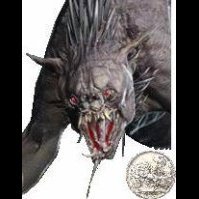
Milano Numismatica
El Chupacabra ha risposto a un topic di El Chupacabra inviato in Segnalazione mostre, convegni, incontri e altro
È già partita la raccolta di articoli per il Gazzettino #13, mi permetto di ricordare a chi volesse partecipare di attenersi alle seguenti regole: -

GC Le monete più attraenti di Alessandro Magno
apollonia ha risposto a un topic di apollonia inviato in Monete greche: Grecia
A differenza degli stateri Atena-Nike di Alessandro Magno che sono stati coniati in grandi quantità sia durante la sua vita sia dopo la sua morte, i suoi distateri sono stati coniati in quantità modeste. Ciononostante, le iscrizioni commerciali provenienti da Anfipoli dimostrano che erano abbastanza diffusi da guadagnarsi il soprannome di “grandi stateri di Alessandro” (stateres megaloi). Come osservano Hatzopoulos e Le Rider, è chiaro che quelle iscrizioni si riferiscono ai distateri di Alessandro perché in un caso una transazione è registrata sia nell'importo di 170 stateri regolari sia in quello di 85 stateri megaloi. La data in cui Alessandro introdusse la sua moneta d'oro Atena-Nike è ancora oggetto di dibattito. L'opinione corrente è che l'evento sia posteriore al 333 a. C. e che questi distateri possano essere stati introdotti non prima del 325 a. C. circa, sotto la supervisione di Antipatro. L'ispirazione per il disegno di questa moneta, che rimase popolare a lungo dopo la morte di Alessandro, è stata oggetto di molte discussioni. Sembra improbabile che la testa di Atena con elmo corinzio si debba intendere come un omaggio alla sua grande città che a quel punto era già caduta sotto il dominio dei Macedoni; è più probabile che sia intesa come un omaggio alla divinità stessa. Raffigurare la dea della saggezza e della guerra era una scelta azzeccata alla vigilia della grande impresa militare che Alessandro aveva in mente. Nike, la Vittoria alata che avanza verso sinistra, porta una corona che nell'antica Grecia era assegnata ai vincitori delle competizioni atletiche e ai condottieri in guerra, e una stylis, in questo contesto l'asta usata per issare una bandiera tipicamente posta a poppa delle navi come simbolo delle vittorie navali ottenute da Alessandro Magno durante le sue campagne militari. Alcuni commentatori, tra cui Martin Price, suggeriscono che essa ricordi la vittoria greca sull’impero persiano a Salamina nel 480 a. C., mentre altri la vedono come un’espressione delle azioni e delle imprese di Alessandro, forse la sua traversata dell'Ellesponto nella primavera del 334 a. C. oppure la sua conquista di Tiro nell'estate del 332 a. C. Sul Forum Ancient Coins la definizione della stylis è “A ship's mast cross-arm” chesi può tradurre “Braccio trasversale dell'albero maestro di una nave” ( https://www.forumancientcoins.com/numiswiki/view.asp?key=stylis&srsltid=AfmBOoojSYSwHTV_OTaXs6SoUMg6eMfF4xisccghd2dyXSkuytWx2UtN ). Sulla foto della Nike con serto d’alloro nella mano destra e stylis appoggiata al braccio sinistro sulle monete d’oro di Alessandro Magno nel classico testo del Price sono indicate le quattro posizioni in cui possono essere presenti monogrammi, simboli e lettere che indicano la zecca e i magistrati monetari che hanno emesso la moneta. apollonia -

Bronzi provinciali romani e mitologia greca
apollonia ha risposto a un topic di apollonia inviato in Monete Romane Provinciali
CNG Electronic Auction 594 Category Bronze, Roman Provincial Description EGYPT, Alexandria. Domitian. AD 81-96. Æ Obol (17mm, 5.18 g, 12h). Dated RY 11 (AD 91/2). Laureate head right / Dolphin entwined around anchor; L IA (date) across field. Köln 381; Dattari (Savio) 600; K&G 24.167; RPC II 2649; Emmett 308.11. Red-brown surfaces, slight porosity, scrapes. VF. apollonia -

Raccolta di rebus attinenti alla Numismatica
apollonia ha risposto a un topic di apollonia inviato in Agorà
Buona notte, apollonia -
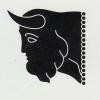
SI SIRACUSA: MINERVA /IPPOCAMPO.
scalptor ha risposto a un topic di gpittini inviato in Monete greche: Sicilia e Magna Grecia
-

SI SIRACUSA: MINERVA /IPPOCAMPO.
scalptor ha risposto a un topic di gpittini inviato in Monete greche: Sicilia e Magna Grecia
Hai ragione Sku. Foto fatte piuttosto male su un supporto già di suo poco leggibile. Appena posso ne faccio di migliori. Intanto vi dó conto della preziosa opinione di Giovanni Santelli a cui avevo pure inviato le stesse foto: "Circa la “terza”, sono francamente perplesso, perché il suo aspetto cambia notevolmente con il cambiare della luce: in una foto mi pare una piccolissima contromarca con chicco?, nelle altre tre, invece, sembra una corrosione aggiustata (è un “intervento” che i “restauratori” amano particolarmente) e ciò mi parrebbe evidente nella sua prima foto a sinistra, dove anche la bocca di Atena appare pesantemente deformata dalla corrosione. Forse l’esame diretto può consentire di capire di più, ma non è detto. La mancanza di un contorno ben definito, comunque, mi porta a ritenere probabile, anche se non matematicamente sicuro, che non si tratti di una contromarca. Personalmente la metterei “fra color che son sospesi” e la “promuoverei” al ruolo di contromarca solo rilevando qualche altro esemplare analogo che a oggi non mi risulta." -
Mezzo Ducato 1694. Come si presenta il taglio?
Releo ha risposto a un topic di Releo inviato in Monete e Medaglie delle Due Sicilie, già Regno di Napoli e Sicilia
Penso abbiate ragione. Si tratta pur sempre di un taglio liscio, anche se è presente qualche segno che potrebbe far pensare ad altro. Grazie a tutti. -
Medaglia devozionale di san pietro e paolo?
Gianlucai ha risposto a un topic di Gianlucai inviato in Medaglistica
grazie. -
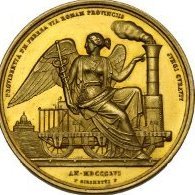
Chi è questo imperatore?
Oppiano ha risposto a un topic di Edwin inviato in Richiesta Identificazione/valutazione/autenticità
Forse questo? Follis per Ticino. -
Antonio Caggia ha iniziato a seguire Ptr79
-
500 lire Caravelle
Tota74 ha risposto a un topic di Tota74 inviato in Richiesta Identificazione/valutazione/autenticità
Grazie infinite a tutti, come già detto sono inesperta e ritrovando questa moneta mi è sembrata una stranezza. -
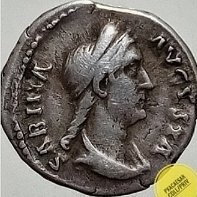
Chi è questo imperatore?
Pxacaesar ha risposto a un topic di Edwin inviato in Richiesta Identificazione/valutazione/autenticità
Ciao, dalle lettere che si intravedono sul dritto dovrebbe trattarsi di un follis dell'imperatore Massenzio 🙂 ANTONIO -
 Antonio Caggia si è registrato sul forum
Antonio Caggia si è registrato sul forum -
Metaponto , contromarca ...
joannes carolus ha risposto a un topic di joannes carolus inviato in Monete greche: Sicilia e Magna Grecia
-

Medaglia devozionale di san pietro e paolo?
borghobaffo ha risposto a un topic di Gianlucai inviato in Medaglistica
Medaglia devozionale, bronzo/ ottone, del XVII sec. seconda metà, Roma?- D/ La Madonna seduta sul trono con Gesù Bambino.- R/ Due santi , se escludiamo S. Pietro e S. Paolo, potrebbero essere S. Felice e Adautto martiri, sotto l'imperatore Diocleziano, ma è solo una possibile ipotesi? Nella catacomba/ cimitero di Commodilla si trova una immagine della Beata Vergine con il Bambino tra i due santi citati! Ciao Borgho -
Dubitativamente attribuito alle tribù macedoni dei Mygdones o dei Krestones, un " rare " esemplare di statere di alta epoca, con al diritto caprone retrospicente ed in ginocchio ed al rovescio quadrato incuso quadripartito . Sarà il 9 Ottobre in vendita Concordia 34 al n. 34 .
-
Chi è questo imperatore?
Edwin ha risposto a un topic di Edwin inviato in Richiesta Identificazione/valutazione/autenticità
Ringrazio chi mi sarà di aiuto -

Rame puro per le monete napoletane
demonetis ha risposto a un topic di demonetis inviato in Monete e Medaglie delle Due Sicilie, già Regno di Napoli e Sicilia
Sono ancora in fase di studio. Purtroppo è difficile rintracciare documenti completi, ovvero un argomento trattato dall'inizio alla fine; spesso, invece, si scovano solo alcuni pezzi del puzzle mentre gli altri ci restano ignoti. -

Chi è questo imperatore?
Oppiano ha risposto a un topic di Edwin inviato in Richiesta Identificazione/valutazione/autenticità
“Grazie” -
Chi è questo imperatore?
Edwin ha aggiunto un nuovo link in Richiesta Identificazione/valutazione/autenticità
Sapete dirmi che moneta si tratta? -
Moneta interessante, grazie per averla condivisa.
Lamoneta.it
Il network
Hai bisogno di aiuto?
